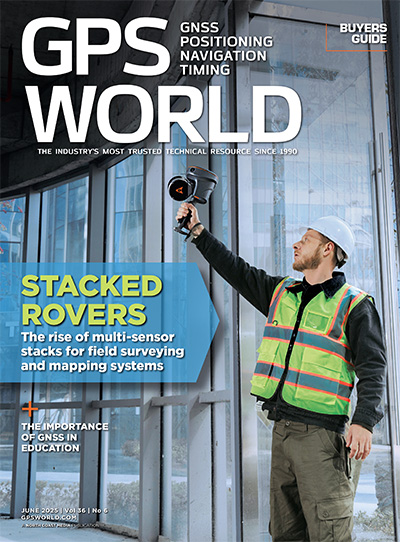
About William Tewelow, GISP
William Tewelow is a designated Geographic Information Systems Professionals (GISP). He has a master’s degree in Organizational Leadership with a focus on Performance Management, a bachelor degree in Intelligence Studies focused on geospatial intelligence, and an undergraduate degree in Geographic Information Technologies.
William retired from the Federal Aviation Administration (FAA) in 2025 after 16 years in various roles supporting geospatial information for aviation operations in the national airspace. He is a graduate of the management fellowship Program for Emerging Leaders where he served on special assignment to the Department of Transportation leading a national strategic geospatial initiative under the authority of the White House Open Data Partnership.
Since 2017, William has been writing for GPS World magazine. He is a U.S. Navy Veteran of 23 years, and during that time he served as as a Geospatial and Imagery Intelligence Specialist, a Naval Aviator, a Meteorologist, and a Tactical Oceanographer earning three achievement medals. He was among the first in the nation to earn a Geospatial Specialist Certification from the U.S. Department of Labor while working at NASA Stennis Space Center.
His favorite quote is, "A man's mind changed by a new idea can never go back to its original dimension." ~ Oliver Wendell Holmes
Posts by William Tewelow, GISP
A technological transformation currently is underway. As the amount of information overwhelms existing systems, AI is emerging as the solution. Read more»
“We’re at 103,000 feet. As you look up the sky looks beautiful but hostile. …Can see for over 400 miles. The sky [above me] is absolutely black. …I can see... Read more»
“The tasks of paleontologists and classical historians and archaeologists are remarkably similar — to excavate, decipher and bring to life the tantalizing remnants of a time we will never see.”... Read more»
Tenacity of spirit is one of the great virtues. Supporters of geospatial technology have often had to endure steadfast resolve convincing others of the multi-dimensional value GIS provides. It is... Read more»
Sixty-three years ago, on Friday, Oct. 4, 1957, the Space Age began — most everyone alive today is a progeny. The Soviet Union sent a shiny, metal, beach-ball-sized sphere into... Read more»
At any given moment, more than 5,000 airplanes are flying over the United States. In a single year, nearly 778 million passengers will take to the skies — more than... Read more»
How are oblique views derived from aerial imagery? Typically, a camera takes a field of view of 120 degrees (+/– 60 degrees either side of centerline). The nadir is straight... Read more»
Add small sats, gamification and nanotechnology, and you've got a bunch of powerful new drivers pushing out geospatial frontiers in every direction. These exciting tools are opening up new market sectors and bringing powerful techniques to military and other applications. Read more»










Follow Us